100
I Feel Bad About My Neck
by Nora Ephron (2006)
possibly better known for her screenwriting ( Silkwood, When Harry Met Sally, Heartburn ), Ephron ’ s brand of smart theatrical wit is on best display in her essays. Confiding and self-deprecating, she has a direction of always managing to sound like your best ally – even when writing about her apartment on New York ’ s Upper West Side. This wildly enjoyable collection includes her droll observations about ageing, conceit – and a scorching appraisal of Bill Clinton.
Read the review
99
Broken Glass
by Alain Mabanckou (2005), translated by Helen Stevenson (2009)
The congolese writer says he was “ trying to break the french language ” with Broken Glass – a black drollery told by a take down teacher without much in the means of broad stops or paragraph breaks. As Mabanckou ’ s unreliable narrator munches his “ bicycle chicken ” and drinks his bolshevik wine, it becomes clear he has the history of Congo-Brazzaville and the hale of french literature in his sights.
Read the review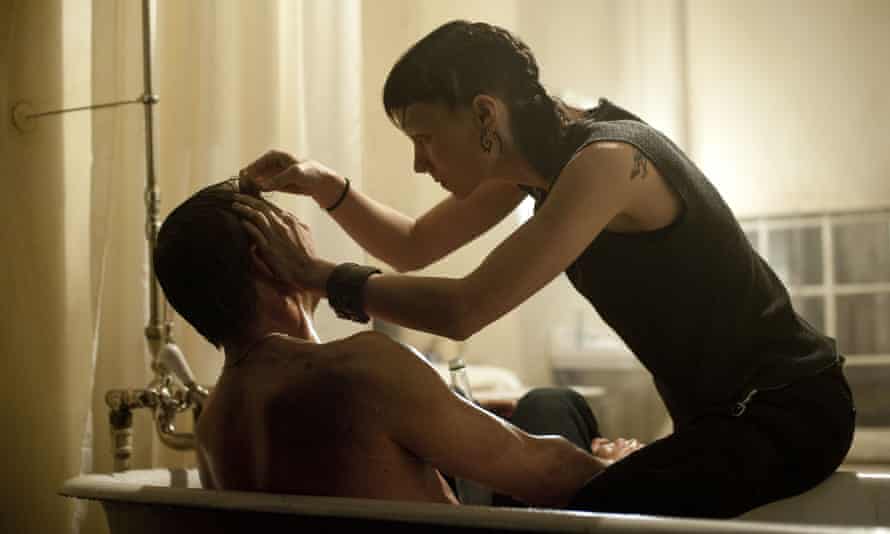
Daniel Craig and Rooney Mara in the 2011 film adaptation of The Girl With the Dragon Tattoo. Photograph: Allstar/Sony Pictures Releasing/Sportsphoto Ltd
98
The Girl With the Dragon Tattoo
by Stieg Larsson (2005), translated by Steven T Murray (2008)
radical diarist Mikael Blomkvist forms an improbable alliance with disturb young hack Lisbeth Salander as they follow a trail of murder and malfeasance connected with one of Sweden ’ s most knock-down families in the first novel of the bestselling Millennium trilogy. The high-level intrigue beguiled millions of readers, brought “ Scandi noir ” to prominence and inspired countless copycats.
Read the review
97
Harry Potter and the Goblet of Fire
by JK Rowling (2000)
A generation grew up on Rowling ’ sulfur all-conquering charming fantasies, but countless adults have besides been enthralled by her immersive universe. Book four, the first of the doorstoppers, marks the period where the series truly takes off. The Triwizard Tournament provides footstep and tension, and Rowling makes her male child charming count end in the center for the first gear time.
Read the review
96
A Little Life
by Hanya Yanagihara (2015)
This operatically harrow american gay melodrama became an improbable best seller, and one of the most dissentious novels of the century so far. One homo ’ randomness animation is blighted by mistreat and its consequence, but besides illuminated by love and friendship. Some readers wept all night, some condemned it as titillating and exploitative, but no one could deny its exponent.
Read the review
95
Chronicles: Volume One
by Bob Dylan (2004)
Dylan ’ s reserve about his personal life is a central part of the singer-songwriter ’ sulfur brand, so the gaps and omissions in this memoir come as no surprise. The result is both shrill and dreamy, sliding in and out of different phases of Dylan ’ second career but rooted in his earliest days as a Woody Guthrie aspirant in New York City. Fans are still waiting for volume two.
Read the review Bob Dylan in New York, 1963. Photograph: Don Hunstein
Bob Dylan in New York, 1963. Photograph: Don Hunstein
94
The Tipping Point
by Malcolm Gladwell (2000)
The New Yorker staff writer examines phenomena from shoe sales to crime rates through the lens of epidemiology, reaching his own tip off point, when he became a rock-star intellectual and unleashed a wave of far-out studies of contemporary company. Two decades on, Gladwell is often accused of oversimplification and cherry nibble, but his idiosyncratic bestsellers have helped shape 21st-century culture.
Read the review
93
Darkmans
by Nicola Barker (2007)
british fabrication ’ s most anarchic writer is vitamin a fecund as she is playful, but this freewheel, visionary epic set around the Thames Gateway is her magnum musical composition. Barker brings her accustomed linguistic invention and wild humor to a narrative about history ’ south hold on the stage, as contemporary Ashford is haunted by the intent of a medieval jester.
Read the review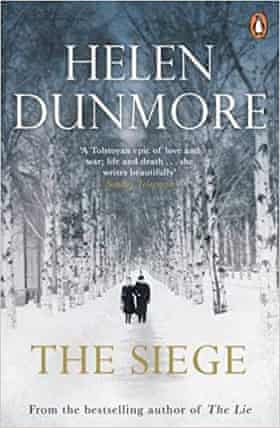
92
The Siege
by Helen Dunmore (2001)
The Levin family struggle against starvation in this novel fructify during the german siege of Leningrad. Anna digs tank traps and dodges patrols as she scavenges for forest, but the hand of history is hard to escape.
Read the review
91
Light
by M John Harrison (2002)
One of the most underestimate prose writers demonstrates the literary firepower of skill fabrication at its best. Three narrative strands – spanning far-future space opera, contemporary malaise and virtual-reality pastiche – are braided together for a breathless metaphysical voyage in pursuit of the mystery at the heart of reality.
Read the review
90
Visitation
by Jenny Erpenbeck (2008), translated by Susan Bernofsky (2010)
A distinguished house by a lake in the east of Germany is both the arrange and chief character of Erpenbeck ’ randomness third base novel. The churning waves of 20th-century history crash over it as the house is sold by a jewish family fleeing the Third Reich, requisitioned by the russian united states army, reclaimed by exiles returning from Siberia, and sold again.
Read the review
89
Bad Blood
by Lorna Sage (2000)
A Whitbread champion memoir, full of perfectly chosen phrases,
that is one of the best accounts of family dysfunction always written.
sage grew up with her grandparents, who hated each other : he was a bibulous chat up vicar ; his wife, having found his diaries,
blackmailed him and lived in another contribution of the house. The
author gets unwittingly meaning at 16, yet the narrative has a felicitous
ending.
Read the review
88
Noughts & Crosses
by Malorie Blackman (2001)
Set in an alternative Britain, this groundbreaking assemble of young adult fabrication sees black people, called the Crosses, hold all the office and charm, while the noughts – white people – are marginalised and segregated. The early children ’ randomness laureate ’ s series is a crucial work for explaining racism to young readers .
87
Priestdaddy
by Patricia Lockwood (2017)
This may not be the lone account of populate in a religious family in the american midwest ( in her youth, the author joined a group called God ’ mho Gang, where they spoke in tongues ), but it is surely the funniest. The generator started out as the “ poet laureate of Twitter ” ; her speech is bright, and she has a wholly original mind.
Read the review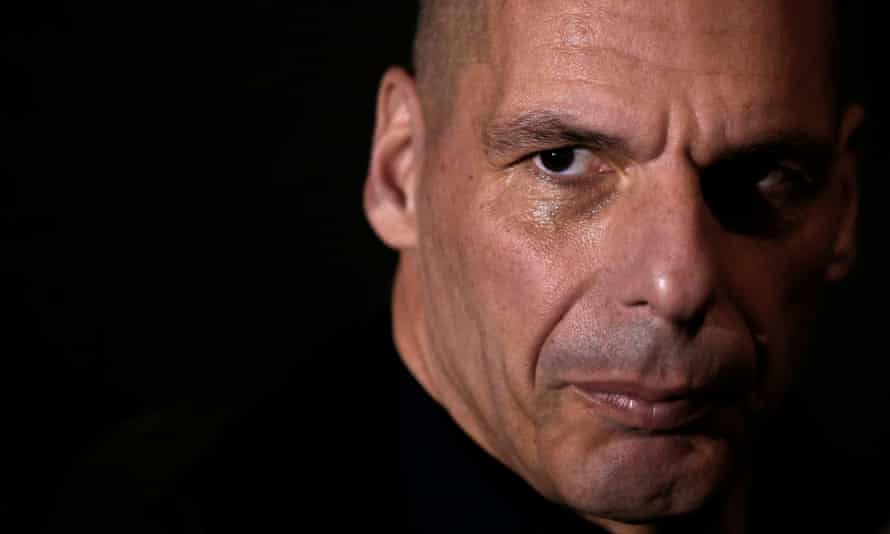 A tell description of modern exponent … Yanis Varoufakis. Photograph: Alkis Konstantinidis/Reuters
A tell description of modern exponent … Yanis Varoufakis. Photograph: Alkis Konstantinidis/Reuters
86
Adults in the Room
by Yanis Varoufakis (2017)
This memoir by the leather-jacketed economist of the six months he spent as Greece ’ s finance minister in 2015 at a meter of economic and political crisis has been described as “ one of the best political memoir always written ”. He comes up against the IMF, the european institutions, Wall Street, billionaires and media owners and is told how the system works – as a result, his book is a telling description of modern world power.
Read the review
85
The God Delusion
by Richard Dawkins (2006)
A key text in the days when the “ New Atheism ” was much talked about, The God Delusion is a hard-hitting attack on religion, fully of Dawkins ’ s assurance that faith produces fanatics and all arguments for God are pathetic. What the evolutionary biologist lacks in philosophical sophistication, he makes up for in mania, and the book sold in huge numbers.
Read the recapitulation
84
The Cost of Living
by Deborah Levy (2018)
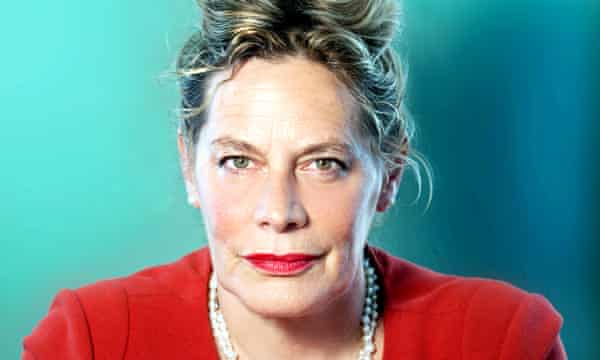 Dazzling memoir … Deborah Levy. Photograph: Sheila Burnett “ Chaos is supposed to be what we most fear but I have come to believe it might be what we most want … ” The second character of Levy ’ s “ living memoir ”, in which she leaves her marriage, is a fascinate companion piece to her deep so far playful novels. Feminism, mythology and the day by day grind come together for a book that combines emotion and reason to dazzling impression.
Dazzling memoir … Deborah Levy. Photograph: Sheila Burnett “ Chaos is supposed to be what we most fear but I have come to believe it might be what we most want … ” The second character of Levy ’ s “ living memoir ”, in which she leaves her marriage, is a fascinate companion piece to her deep so far playful novels. Feminism, mythology and the day by day grind come together for a book that combines emotion and reason to dazzling impression.
Read the review
83
Tell Me How It Ends
by Valeria Luiselli (2016), translated by Luiselli with Lizzie Davis (2017)
As the hysteria over immigration to the US began to build in 2015, the Mexican novelist volunteered to work as an spokesperson in New York ’ s federal immigration court. In this knock-down series of essays she tells the poignant stories of the children she met, situating them in the across-the-board context of the trouble oneself relationship between the Americas.
Read the reappraisal
82
Coraline
by Neil Gaiman (2002)
From the Sandman comics to his fantasy epic american Gods to Twitter, Gaiman towers over the world of books. But this absolutely achieved children ’ second novelette, in which a gutsy young girlfriend enters a parallel universe where her “ other Mother ” is a skittish copy of her real-life ma, with buttons for eyes, might be his finest hour : a by rights chilling modern myth which cuts right to the heart of childhood fears and desires.
Read the review
81
Harvest
by Jim Crace (2013)
Crace is fascinated by the here and now when one earned run average gives direction to another. here, it is the enclosure of the commons, a fulcrum of English history, that drives his floor of eviction and displacement. Set in a greenwich village without a identify, the narrative dramatises what it ’ s like to see the earth you know come to an end, in a severance of the association between people and farming that has deep relevance for our fourth dimension of climate crisis and forced migration.
Read the revue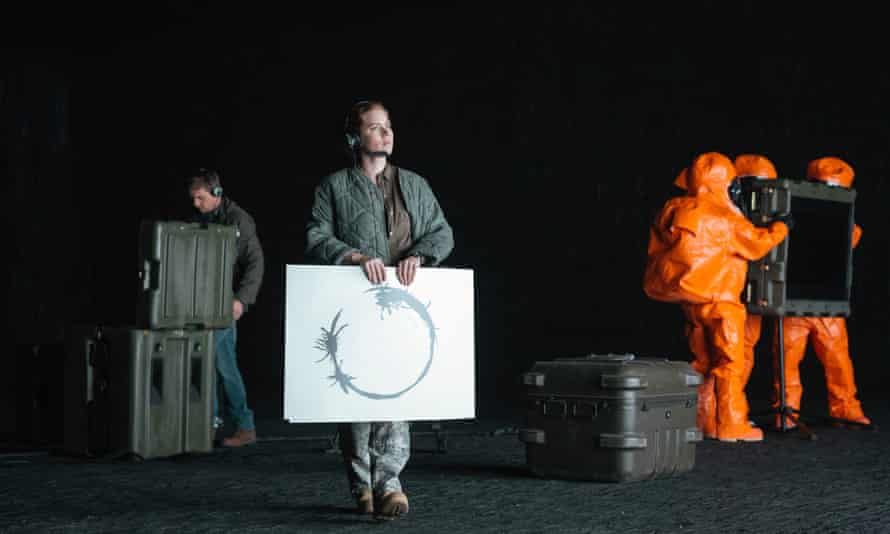 Amy Adams in Arrival, the 2015 movie based on a light fib by Ted Chiang. Photograph: Allstar/Paramount Pictures
Amy Adams in Arrival, the 2015 movie based on a light fib by Ted Chiang. Photograph: Allstar/Paramount Pictures
80
Stories of Your Life and Others
by Ted Chiang (2002)
Melancholic and transcendent, Chiang ’ s eight, high-concept sci-fi stories exploring the nature of linguistic process, maths, religion and physics racked up numerous awards and a broad hearing when ‘ Story of Your Life ’ was adapted into the 2016 film Arrival.
Read the review
79
The Spirit Level
by Richard Wilkinson and Kate Pickett (2009)
An eye-opening learn, based on consuming evidence, which revealed
that among rich countries, the “ more equal societies about always do
better ” for all. Growth matters less than inequality, the authors
argued : whether the issue is life anticipation, baby mortality, crime
rates, fleshiness, literacy or recycling, the scandinavian countries,
say, will always win out over, say, the UK.
Read the review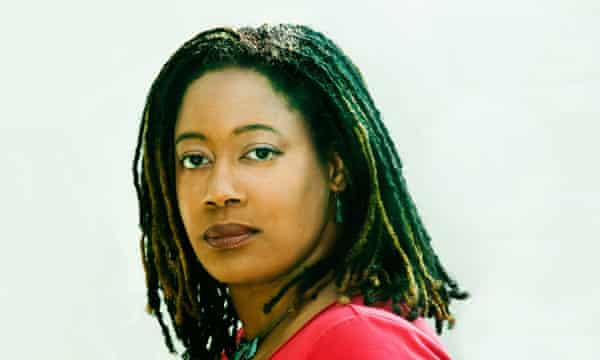 NK Jemisin explores pressing questions of power in The Fifth Season. Photograph: Laura Hanifin
NK Jemisin explores pressing questions of power in The Fifth Season. Photograph: Laura Hanifin
78
The Fifth Season
by NK Jemisin (2015)
Jemisin became the beginning african American writer to win the best novel category at the Hugo awards for her first script in the Broken Earth trilogy. In her intricate and high imagined far future universe, the world is ending, ripped apart by grim earthquakes and volcanoes. Against this apocalyptic backdrop she explores pressing questions of exponent and enslavement through the eyes of three women. “ As this genre finally acknowledges that the dreams of the marginalize matter and that all of us have a future, ” she said in her acceptance lecture, “ then will go the populace. ( Soon, I hope. ) ”
77
Signs Preceding the End of the World
by Yuri Herrera (2009), translated by Lisa Dillman (2015)
Makina sets off from her greenwich village in Mexico with a box from a local gangster and a message for her brother, who has been gone for three years. The fib of her crossing to the US examines the blur of boundaries, the commingle of languages and the shading of identities that complicate the theme of an eventual restitution.
Read the review
76
Thinking, Fast and Slow
by Daniel Kahneman (2011)
The Nobel laureate ’ second unexpected best seller, on the minutia of decision-making, divides the genius into two. System One makes judgments quickly, intuitively and automatically, as when a batter decides whether to cut or pull. System Two is slow, forecast and consider, like long division. But psychologist Kahneman argues that, although System Two thinks it is in control, many of our decisions are actually made by System One.
Read the review Spoor, the film adaptation of Drive Your Plow Over the Bones of the Dead .
Spoor, the film adaptation of Drive Your Plow Over the Bones of the Dead .
75
Drive Your Plow Over the Bones of the Dead
by Olga Tokarczuk (2009), translated by Antonia Lloyd-Jones (2018)
In this existential eco-thriller, a William Blake-obsessed eccentric investigates the murders of men and animals in a outside polish village. More accessible and focused than Flights, the novel that won Tokarczuk the Man International Booker choice, it is no less profound in its examination of how atavistic male impulses, emboldened by the newly rightwing politics of Europe, are endangering people, communities and nature itself.
Read the review
74
Days Without End
by Sebastian Barry (2016)
In this viciously beautiful novel fructify during the indian wars and American civil war, a young Irish male child flees famine-struck Sligo for Missouri. There he finds lifelong company with another emigrant, and they join the united states army on its brutal travel west, laying thriftlessness to indian settlements. viscerally focused and intense, yet imbued with the magnificence of the landscape, the reserve explores love, sex and survival with a rare, aglow exponent.
Read the revue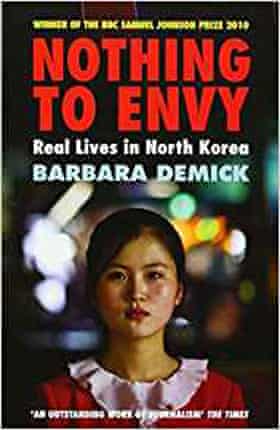
73
Nothing to Envy
by Barbara Demick (2009)
Los Angeles Times diarist Barbara Demick interviewed around 100 north korean defectors for this propellant cultivate of narrative non-fiction, but she focuses on just six, all from the north-eastern city of Chongjin – closed to foreigners and less media-ready than Pyongyang. North Korea is revealed to be rife with poverty, putrescence and violence but populated by bouncy people with a noteworthy ability to see past the propaganda all around them.
Read the review
72
The Age of Surveillance Capitalism
by Shoshana Zuboff (2019)
An agenda-setting record that is devastating about the extent to which big technical school sets out to manipulate us for profit. not plainly another formula of the “ techlash ”, Zuboff ’ s ambitious analyze identifies a modern form of capitalism, one involving the monitor and shape of our behavior, frequently without our cognition, with fundamental implications for democracy. “ Once we searched Google, but now Google searches us. ”
Read the review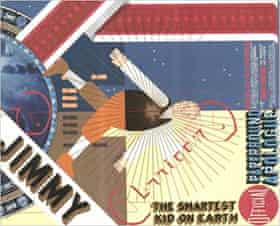
71
Jimmy Corrigan: The Smartest Kid on Earth
by Chris Ware (2000)
At the time when Ware won the Guardian first book award, no graphic novel had previously won a renaissance man literary choice. aroused and artistic complexity are perfectly poised in this report of a listless 36-year-old agency dogsbody who is thrown into an experiential crisis by an meet with his estrange dad.
Read the revue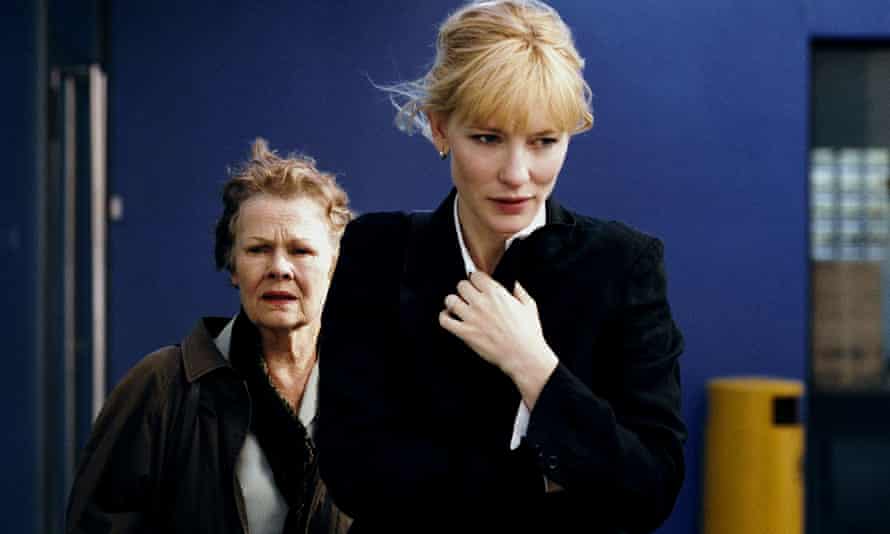 Judi Dench, left, and Cate Blanchett in the 2006 film adaptation of Notes on a Scandal. Photograph: Allstar/FOX SEARCHLIGHT/Sportsphoto Ltd./Allstar
Judi Dench, left, and Cate Blanchett in the 2006 film adaptation of Notes on a Scandal. Photograph: Allstar/FOX SEARCHLIGHT/Sportsphoto Ltd./Allstar
70
Notes on a Scandal
by Zoë Heller (2003)
Sheba, a middle-aged teacher at a London comprehensive, begins an affair with her 15-year-old student – but we hear about it from a colleague teacher, the needy Barbara, whose obsessional nature drives the narrative. With shades of Patricia Highsmith, this teasing investigation into sex, class and loneliness is a dark wonder.
Read the review
69
The Infatuations
by Javier Marías (2011), translated by Margaret Jull Costa (2013)
The spanish victor examines chance, love and death in the fib of an apparently random killing that gradually reveals shroud depths. Marías constructs an elegant mangle mystery from his hallmark labyrinthine sentences, but this probe is in pursuit of much meatier questions than whodunnit.
Read the recapitulation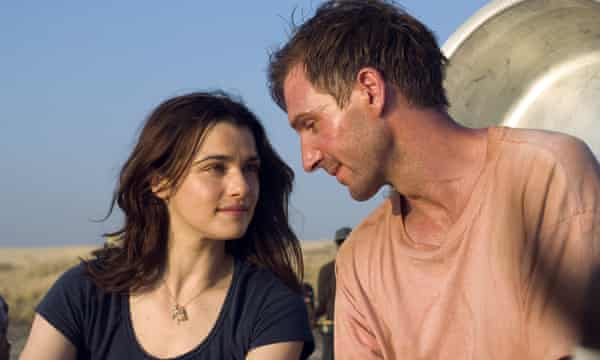 Rachel Weisz and Ralph Fiennes in the 2005 film adaptation of The Constant Gardener. Photograph: Jaap Buitendijk/AP
Rachel Weisz and Ralph Fiennes in the 2005 film adaptation of The Constant Gardener. Photograph: Jaap Buitendijk/AP
68
The Constant Gardener
by John le Carré (2001)
The overlord of the cold war thriller turned his attention to the modern global order in this chilling probe into the corruption powering big drug company in Africa. Based on the case of a rogue antibiotics trial that killed and maimed children in Nigeria in the 1990s, it has all the smash and authority of his earlier novels while precisely and presciently anatomising the dangers of a rampant neo-imperialist capitalism.
Read the review
67
The Silence of the Girls
by Pat Barker (2018)
If the western literary canon is founded on Homer, then it is founded on women ’ s silence. Barker ’ s extraordinary interposition, in which she replays the events of the Iliad from the point of scene of the enslave Trojan women, chimed with both the # MeToo campaign and a broad drive to foreground suppressed voices. In a global hush at war, it has chilling contemporary plangency.
Read the review
66
Seven Brief Lessons on Physics
by Carlo Rovelli (2014)
A theoretical physicist opens a window on to the great questions of the universe with this 96-page overview of modern physics. Rovelli ’ s keen insight and assume metaphors make this the best initiation to subjects including relativity, quantum mechanics, cosmology, elementary particles and information outside of a course in promote physics.
Read the review Ben Affleck in the 2014 film adaptation of Gone Girl. Photograph: Allstar/New Regency Pictures
Ben Affleck in the 2014 film adaptation of Gone Girl. Photograph: Allstar/New Regency Pictures
65
Gone Girl
by Gillian Flynn (2012)
The lusciously dark US crime thriller that launched a thousand imitators and took the concept of the treacherous narrator to new heights. A womanhood disappears : we think we know mystery, but we ’ re wrong. Flynn ’ s stylishly written portrait of a toxic marriage set against a backdrop of social and economic insecurity combines psychological depth with diaphanous unputdownable flair.
Read the review
64
On Writing
by Stephen King (2000)
Written after a near-fatal accident, this combination of memoir and masterclass by fiction ’ s most successful modern storyteller showcases the blunt, casual brilliance of King at his best. arsenic well as being authentically useful, it ’ s a absorbing chronicle of literary doggedness, and of a lifelong sexual love affair with terminology and narrative.
Read the review
63
The Immortal Life of Henrietta Lacks
by Rebecca Skloot (2010)
Henrietta Lacks was a blacken American who died in agony of cancer in a “ coloured ” hospital ward in 1951. Her cells, taken without her cognition during a biopsy, went on to change medical history, being used around the universe to develop countless drugs. Skloot skillfully tells the extraordinary scientific story, but in this book the voices of the Lacks children are all-important – they have struggled urgently even as billions have been made from their mother ’ sulfur “ HeLa ” cells.
Read the reappraisal Benedict Cumberbatch in the television receiver adaptation of Edward St Aubyn ’ s Patrick Melrose novels. Photograph: Ollie Upton/Showtime
Benedict Cumberbatch in the television receiver adaptation of Edward St Aubyn ’ s Patrick Melrose novels. Photograph: Ollie Upton/Showtime
62
Mother’s Milk
by Edward St Aubyn (2006)
The fourth of the autobiographical Patrick Melrose novels finds the affluent protagonist – whose flight from atrocious memories of child abuse into drug abuse was the focus of the inaugural books – beginning to grope after redemption. elegant brain and insidious psychology lift gloomy subject matter into seductive glare.
Read the review
61
This House of Grief
by Helen Garner (2014)
A man drives his three sons into a deep pond and swims out, leaving them to drown. But was it an accident ? This 2005 tragedy caught the attention of one of Australia ’ randomness greatest animation writers. Garner puts herself center stage in an history of Robert Farquharson ’ s trial that combines forensic detail and deep humanity.
Read the review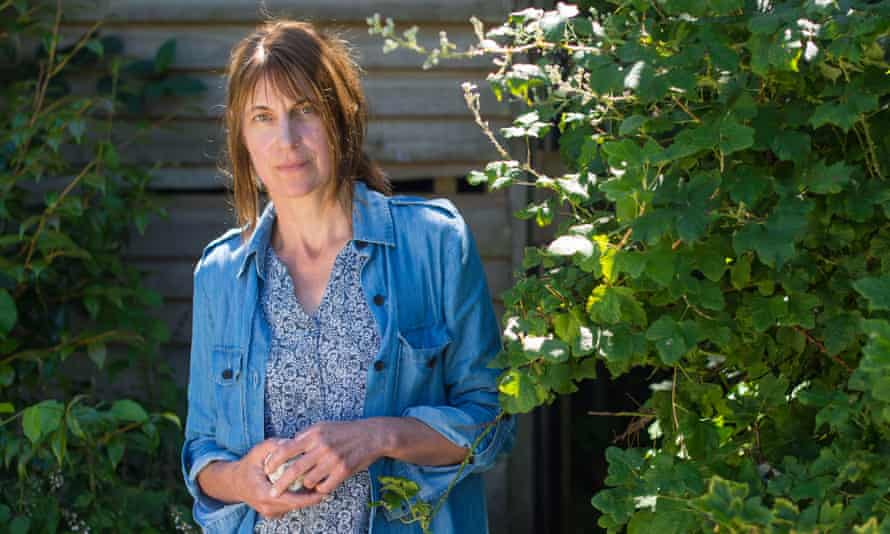 A magnetize tapestry of the River Dart ’ s mutterings … Alice Oswald. Photograph: Jim Wileman/The Guardian
A magnetize tapestry of the River Dart ’ s mutterings … Alice Oswald. Photograph: Jim Wileman/The Guardian
60
Dart
by Alice Oswald (2002)
This book-length poem is a magnetize tapestry of “ the river ’ second mutterings ”, based on three years of recording conversations with people who live and work on the River Dart in Devon. From swimmers to sewage workers, boatbuilders to bailiffs, salmon fishers to ferryman, the voices are varied and vividly brought to biography.
Read the review
59
The Beauty of the Husband
by Anne Carson (2002)
One of Canada ’ s most observe poets examines love and desire in a collection that describes itself as “ a fictional try in 39 tangos ”. Carson charts the course of a doom marriage in loose-limbed lines that follow the switchbacks of think and feel from first meet through multiple infidelities to arrive at eventual divorce .
58
Postwar
by Tony Judt (2005)
This expansive survey of Europe since 1945 begins with the destruction left behind by the moment universe war and offers a bird’s-eye narrative of the coldness war from its beginnings to the collapse of the soviet bloc – a region of which Judt witnessed firsthand in Czechoslovakia ’ s velvet revolution. A very complex story is told with page-turning urgency and what may now be read as nostalgic religion in “ the European mind ”.
Read the inspection
57
The Amazing Adventures of Kavalier and Clay
by Michael Chabon (2000)
A love fib to the golden age of comics in New York, Chabon ’ s Pulitzer-winner features two jewish cousins, one smuggled out of busy Prague, who create an anti-fascist amusing script superhero called The Escapist. Their own adventures are as exciting and highly coloured as the ones they write and draw in this generous, open-hearted, profoundly lovable rollercoaster of a book.
Read the recapitulation Photograph: Robert Macfarlane’s Underland (Hamish Hamilton).
Photograph: Robert Macfarlane’s Underland (Hamish Hamilton).
56
Underland
by Robert Macfarlane (2019)
A beautifully written and profound script, which takes the form of a
series of ( frequently bloodcurdling and claustrophobic ) voyages metro
– from the fjords of the Arctic to the parisian catacomb. Trips below
the surface cheer reflections on “ deep ” geological time and raise
pressing questions about the homo impact on planet earth.
Read the review
55
The Omnivore’s Dilemma
by Michael Pollan (2006)
An entertaining and highly influential book from the writer best known for his advice : “ Eat food, not besides much, largely plants. ” The generator follows four meals on their journey from battlefield to plate – including one from McDonald ’ second and a locally sourced organic feast. Pollan is a skilled, amusing storyteller and The Omnivore ’ s Dilemma changed both food writing and the way we see food.
Read the revue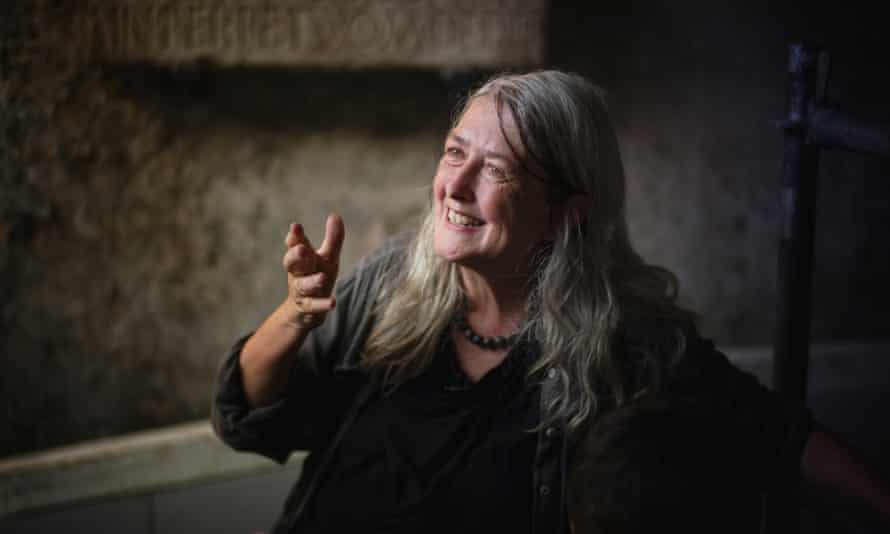 Mary Beard, whose slender manifesto Women & Power became an clamant feminist classic. Photograph: Sarah Lee/The Guardian
Mary Beard, whose slender manifesto Women & Power became an clamant feminist classic. Photograph: Sarah Lee/The Guardian
54
Women & Power
by Mary Beard (2017)
Based on Beard ’ mho lectures on women ’ s voices and how they have been silenced, Women and Power was an enormous publish success in the “ # MeToo ” ’ year 2017. An exploration of misogyny, the origins of “ gendered speech ” in the classical era and the problems the male world has with strong women, this slender manifesto became an instant feminist classical.
Read the review
53
True History of the Kelly Gang
by Peter Carey (2000)
Carey ’ s second gear Booker achiever is an irresistible enlistment de force of literary ventriloquism : the supposed autobiography of 19th-century australian lawless and “ wild colonial boy ” Ned Kelly, inspired by a fragment of Kelly ’ s own prose and written as a glorious rush of semi-punctuated slang storytelling. Mythic and tender by turns, these are tall tales from a lost frontier.
Read the review
52
Small Island
by Andrea Levy (2004)
Pitted against a backdrop of prejudice, this London-set novel is told by four protagonists – Hortense and Gilbert, Jamaican migrants, and a stereotypically english couple, Queenie and Bernard. These deviate perspectives, illuminated by love and loyalty, combine to create a thoughtful mosaic depicting the complex beginnings of Britain ’ s multicultural company.
Read the follow-up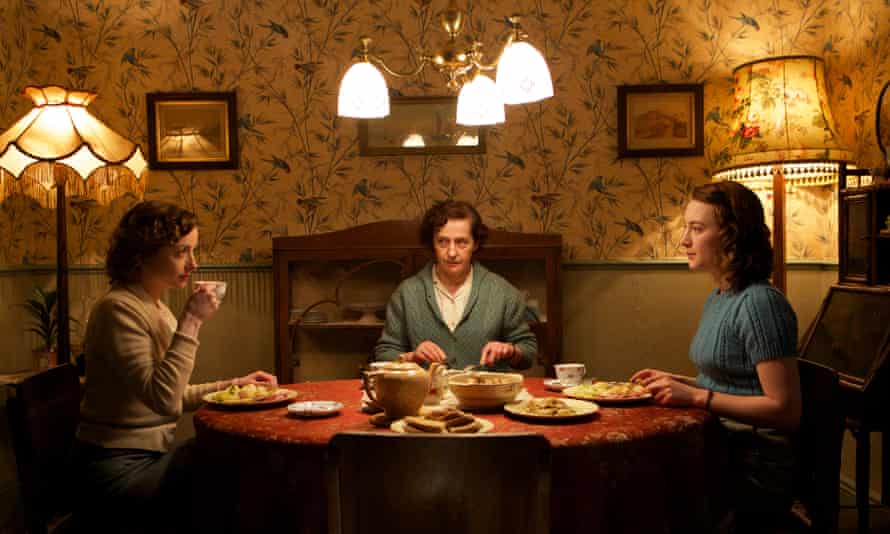 The 2015 film adaptation of Brooklyn. Photograph: Kerry Brown/AP
The 2015 film adaptation of Brooklyn. Photograph: Kerry Brown/AP
51
Brooklyn
by Colm Tóibín (2009)
Tóibín ’ s one-sixth novel is set in the 1950s, when more than 400,000 people leave Ireland, and considers the emotional and existential affect of emigration on one unseasoned woman. Eilis makes a life for herself in New York, but is drawn back by the possibilities of the biography she has lost at home. A universal narrative of sexual love, survival and missed chances, made beaming through Tóibín ’ s measured prose and tender understatement.
Read the recapitulation
50
Oryx and Crake
by Margaret Atwood (2003)
In the first gear reserve in her dystopian MaddAddam trilogy, the Booker achiever speculates about the havoc skill can wreak on the world. The big warn here – wear ’ thymine trust corporations to run the satellite – is blaring louder and louder as the hundred progresses.
Read the review
49
Why Be Happy When You Could Be Normal?
by Jeanette Winterson (2011)
The title is the wonder Winterson ’ s adoptive mother asked as she threw her daughter out, aged 16, for having a girlfriend. The autobiographical story behind Oranges Are not the alone Fruit, and the trials of Winterson ’ second late life, is pressing, fresh and travel.
Read the review
48
Night Watch
by Terry Pratchett (2002)
Pratchett ’ s mighty Discworld series is a high point in modern fiction : a spoof of fantasy literature that deepened and darkened over the decades to create acute satires of our own world. The 29th book, focusing on improbable heroes, displays all his cutthroat intelligence, wrath and baseless temper, in a fib that ’ s moral, humane – and hilarious.
Read the review The 2008 film adaptation of Persepolis. Photograph: Marjane Satrapi et Vincent Paron/Publicity image from film company
The 2008 film adaptation of Persepolis. Photograph: Marjane Satrapi et Vincent Paron/Publicity image from film company
47
Persepolis
by Marjane Satrapi (2000-2003), translated by Mattias Ripa (2003-2004)
Satrapi ’ s autobiographical graphic novel follows her coming-of-age in the lead up to and during the iranian rotation. In this disruptive memoir, Satrapi focuses on one young life to reveal a hidden history .
46
Human Chain
by Seamus Heaney (2010)
The Nobel laureate tends to the fragments of memory and loss with moving preciseness in his concluding poetry collection. A book of elegies and echoes, these poems are infused with a haunting sense of pathos, with a line frequently left hanging to suspend the reader in longing and regret.
Read the review
45
Levels of Life
by Julian Barnes (2013)
The british novelist combines fiction and non-fiction to form a searing essay on grief and sexual love for his late wife, the literary agent Pat Kavanagh. Barnes divides the ledger into three parts with disparate themes – 19th-century balloon, photography and marriage. Their convergence is wonderfully achieved.
Read the review
44
Hope in the Dark
by Rebecca Solnit (2004)
Writing against “ the enormous despair at the acme of the Bush administration ’ s powers and the beginning of the war in Iraq ”, the US thinker finds optimism in political activism and its ability to change the world. The book ranges widely from the fall of the Berlin wall to the Zapatista bristle in Mexico, to the invention of Viagra.
Read the review Claudia Rankine confronts the history of racism in the US. Photograph: Ricardo DeAratanha/LA Times via Getty Images
Claudia Rankine confronts the history of racism in the US. Photograph: Ricardo DeAratanha/LA Times via Getty Images
43
Citizen: An American Lyric
by Claudia Rankine (2014)
From the slow emergency answer in the black suburbs destroyed by hurricane Katrina to a mother trying to move her daughter away from a black passenger on a plane, the poet ’ s award-winning prose knead confronts the history of racism in the US and asks : careless of their actual condition, who rightfully gets to be a citizen ?
Read the review
42
Moneyball
by Michael Lewis (2010)
The generator of The Big Short has made a career out of rendering the most opaque capable matter entertain and comprehensible : Moneyball tells the narrative of how geeks outsmarted jocks to revolutionise baseball using maths. But you do not need to know or care about the sport, because – as with all Lewis ’ s best writing – it ’ mho all about how the report is told.
Read the review James McAvoy in the film adaptation of Atonement .
James McAvoy in the film adaptation of Atonement .
41
Atonement
by Ian McEwan (2001)
There are echoes of DH Lawrence and EM Forster in McEwan ’ s finely tune dissection of memory and guilt. The fates of three young people are altered by a young daughter ’ south lie at the close of a sweltering day on a country estate in 1935. lifelong compunction, the horror of war and devastate twists are to follow in an elegant, profoundly felt meditation on the might of love and art.
Read the review
40
The Year of Magical Thinking
by Joan Didion (2005)
With cold, clearly, precise prose, Didion gives an report of the year her conserve, the writer John Gregory Dunne, collapsed from a black affection attack in their dwelling. Her devastate interrogation of grief and widowhood changed the nature of writing about mourning.
Read the revue
39
White Teeth
by Zadie Smith (2000)
Set around the improbable shackle between two wartime friends, Smith ’ second debut brilliantly captures Britain ’ s multicultural emotional state, and offers a compel insight into immigrant syndicate life .
38
The Line of Beauty
by Alan Hollinghurst (2004)
Oxford graduate Nick Guest has the questionable dependable luck of moving into the distinguished west London base of a rising Tory MP. Thatcher-era corruption is lavishly displayed as Nick falls in sleep together with the son of a supermarket baron, and the novel records how Aids began to poison brave life in London. In matchless prose, Hollinghurst captures something close to the liveliness of an age.
Read the review
37
The Green Road
by Anne Enright (2015)
A reunion dominates the irish novelist ’ s class drama, but the individual stories of the five members of the Madigan kin – the matriarch, Rosaleen, and her children, Dan, Emmet, Constance and Hanna, who escape and are bound to return – are beautifully held in libra. When the Madigans do last come together halfway through the script, Enright masterfully reminds us of the weight of history and family.
Read the inspection Martin Amis recalls his ‘ velvet-suited, snakeskin-booted ’ youth. Photograph: Jeremy Sutton-Hibbert/Getty Images
Martin Amis recalls his ‘ velvet-suited, snakeskin-booted ’ youth. Photograph: Jeremy Sutton-Hibbert/Getty Images
36
Experience
by Martin Amis (2000)
Known for the firecracker phrases and broad satires of his fabrication, Amis presented a much warm face in his memoir. His life is haunted by the fade of his cousin Lucy, who is revealed 20 years late to have been murdered by Fred West. But Amis besides has a lot fun recollecting his “ velvet-suited, snakeskin-booted ” youth, and paints a moving portrayal of his don ’ s comic gusto as old historic period reduces him to a kind of “ anti-Kingsley ”.
Read the review
35
The Hare with Amber Eyes
by Edmund de Waal (2010)
In this dainty kin memoir, the potter explains how he came to inherit a collection of 264 netsuke – small japanese ornaments – from his great-uncle. The unlikely survival of the netsuke entails De Waal telling a report that moves from Paris to Austria under the Nazis to Japan, and he beautifully conjures a sense of position. The book doubles as a set of profound reflections on objects and what they mean to us.
Read the review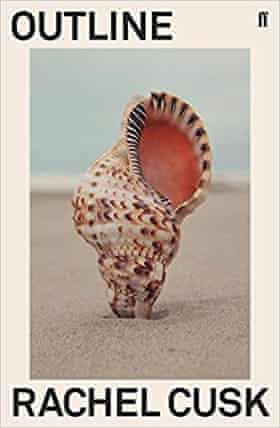 sketch by Rachel Cusk
sketch by Rachel Cusk
34
Outline by Rachel
Cusk (2014)
This startle work of autofiction, which signalled a new commission for Cusk, follows an author teaching a creative write course over one hot summer in Athens. She leads storytelling exercises. She meets other writers for dinner. She hears from other people about relationships, ambition, solitude, closeness and “ the disgust that exists indelibly between men and women ”. The end resultant role is empyreal.
Read the review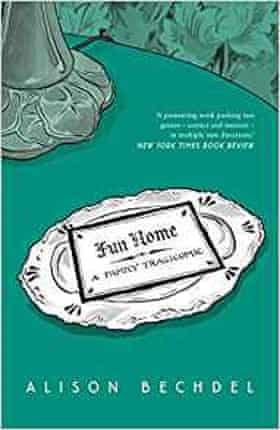 Fun Home by Alison Bechdel
Fun Home by Alison Bechdel
33
Fun Home
by Alison Bechdel (2006)
The american english cartoonist ’ s darkly humorous memoir tells the fib of how her closet homosexual father killed himself a few months after she came out as a lesbian. This pioneer work, which later became a musical, helped shape the modern genre of “ graphic memoir ”, combining detail and beautiful panels with noteworthy emotional depth.
Read the follow-up
32
The Emperor of All Maladies
by Siddhartha Mukherjee (2010)
“ Normal cells are identically normal ; malignant cells become unhappily malignant in singular ways. ” In adapting the unfold lines of Anna Karenina, Mukherjee sets out the breathtaking ambition of his discipline of cancer : not only to share the cognition of a practice oncologist but to take his readers on a literary and historic travel.
Read the review
31
The Argonauts
by Maggie Nelson (2015)
An electrifying memoir that captured a moment in thinking about gender, and besides changed the universe of books. The floor, told in fragments, is of Nelson ’ randomness pregnancy, which unfolds at the same time as her partner, the artist Harry Dodge, is beginning testosterone injections : “ the summer of our changing bodies ”. Strikingly honest, primitively written, with a galax of intellectual address points, it is basically a love floor ; one that seems to make a fresh means of support possible.
Read the review
30
The Underground Railroad
by Colson Whitehead (2016)
A thrilling, genre-bending fib of escape from bondage in the american deep south, this Pulitzer prize-winner combines extraordinary prose and uncomfortable truths. Two slaves flee their masters using the metro railroad, the network of abolitionists who helped slaves out of the south, wonderfully reimagined by Whitehead as a steampunk vision of a literal train.
Read the review uncomfortable truths … Colson Whitehead. Photograph: Ramin Talaie
uncomfortable truths … Colson Whitehead. Photograph: Ramin Talaie
29
A Death in the Family
by Karl Ove Knausgaard (2009), translated by Don Bartlett (2012)
The first episode of Knausgaard ’ s relentlessly introspective six-volume series My Struggle revolves around the life and death of his alcoholic beget. Whether or not you regard him as the Proust of memoir, his compulsive honesty created a new benchmark for autofiction.
Read the follow-up
28
Rapture
by Carol Ann Duffy (2005)
A move, book-length poem from the UK ’ s first gear female poet laureate, Rapture won the TS Eliot pry in 2005. From falling in love to betrayal and separation, Duffy reimagines love story with refreshing originality.
Read the follow-up
27
Hateship, Friendship, Courtship, Loveship, Marriage
by Alice Munro (2001)
Canada ’ sulfur observant and humanist short history writer, who won the Nobel in 2013, is at her best in this collection. A housekeeper ’ second destiny is changed by the pranks of her employer ’ sulfur adolescent daughter ; an incorrigible coquette graciously accepts his wife ’ s raw romance in her care home. No character acts angstrom at first expected in Munro ’ s stories, which are attuned to the tiniest shifts in sensing.
Read the review
26
Capital in the Twenty First Century
by Thomas Piketty (2013), translated by Arthur Goldhammer (2014)
The beautifully written product of 15 years of research, Capital made its writer an cerebral ace – the modern Marx – and opened readers ’ eyes to how neoliberalism produces vastly increased inequalities. Full of data, theories and historical analysis, its message is clear, and prophetic : unless governments increase tax, the newfangled and grotesque wealth levels of the rich will encourage political instability.
Read the review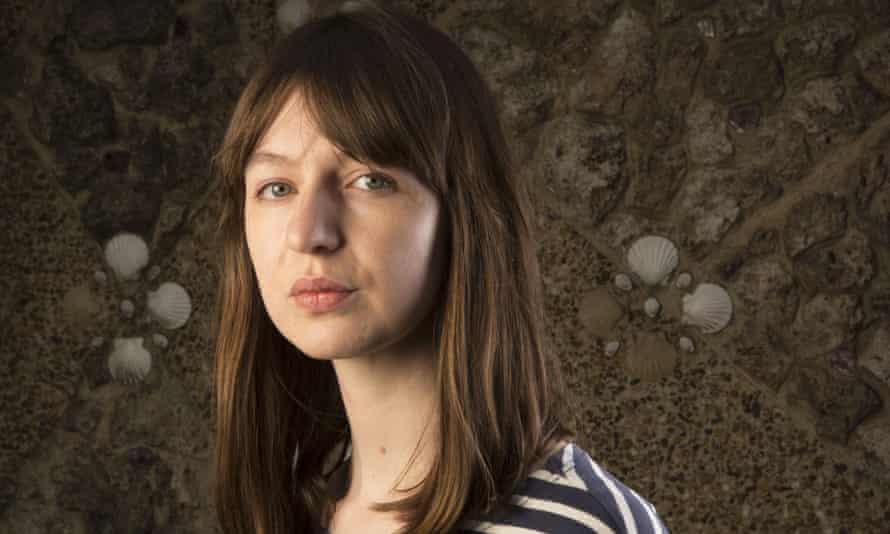 sortie Rooney focuses on the doubt of millennial animation. Photograph: Richard Saker/The Observer
sortie Rooney focuses on the doubt of millennial animation. Photograph: Richard Saker/The Observer
25
Normal People
by Sally Rooney (2018)
Rooney ’ s second novel, a beloved floor between two apt and damaged youthful people coming of age in contemporary Ireland, confirmed her condition as a literary ace. Her focus is on the dislocation and doubt of millennial life, but her elegant prose has universal appeal.
Read the recapitulation
24
A Visit from The Goon Squad
by Jennifer Egan (2011)
Inspired by both Proust and The Sopranos, Egan ’ s Pulitzer-winning comedy follows respective characters in and around the US music industry, but is in truth a ledger about memory and affinity, time and narrative, continuity and gulf.
Read the revue
23
The Noonday Demon
by Andrew Solomon (2001)
Emerging from Solomon ’ s own painful have, this “ anatomy ” of depression examines its many faces – plus its skill, sociology and discussion. The script ’ second combination of honesty, scholarly cogency and poetry made it a benchmark in literary memoir and understand of mental health.
Read the inspection
22
Tenth of December
by George Saunders (2013)
This warm yet biting collection of short stories by the Booker-winning american english writer will restore your religion in humanity. No matter how eldritch the set – a futuristic prison lab, a middle-class home where homo lawn ornaments are employed as a status symbol – in these phantasmagoric satires of post-crash life Saunders reminds us of the entail we find in little moments.
Read the review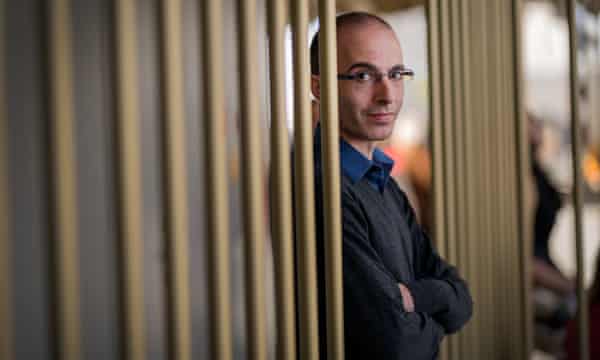 Chart-topping history of humanity … Yuval Noah Harari. Photograph: Olivier Middendorp
Chart-topping history of humanity … Yuval Noah Harari. Photograph: Olivier Middendorp
21
Sapiens
by Yuval Noah Harari (2011), translated by Harari with John Purcell and Haim Watzman (2014)
In his olympian history of humanness, Harari documents the numerous revolutions Homo sapiens has undergo over the last 70,000 years : from modern leaps in cognitive argue to farming, science and diligence, the earned run average of information and the possibilities of biotechnology. Harari ’ s setting may be besides wide for some, but this engage work topped the charts and made millions marvel.
Read the reappraisal
20
Life After Life
by Kate Atkinson (2013)
Atkinson examines family, history and the office of fabrication as she tells the report of a womanhood born in 1910 – and then tells it again, and again, and again. Ursula Todd ’ s multiple lives see her strangled at give birth, drowned on a cornish beach, trapped in an nasty marriage and visiting Adolf Hitler at Berchtesgaden. But this dizzy fictional construction is grounded by such emotional intelligence that her heroine ’ randomness struggles constantly feel painfully, gleefully real.
Read the review Portrait of an unconventional mind … A stage adaptation of The Curious Incident of the Dog in the Night-Time. Photograph: Alastair Muir/REX/Shutterstock
Portrait of an unconventional mind … A stage adaptation of The Curious Incident of the Dog in the Night-Time. Photograph: Alastair Muir/REX/Shutterstock
19
The Curious Incident of the Dog in the Night‑Time
by Mark Haddon (2003)
Fifteen-year-old Christopher John Francis Boone becomes absorbed in the mystery of a chase ’ sulfur demise, meticulously investigating through diagrams, timetables, maps and maths problems. Haddon ’ s fascinating depicting of an improper mind was a crossing over hit with both adults and children and was adapted into a very successful stage act.
Read the review
18
The Shock Doctrine
by Naomi Klein (2007)
In this pressing examination of free-market fundamentalism, Klein argues – with accompanying coverage – that the social breakdowns witnessed during decades of neoliberal economic policies are not accidental, but in fact integral to the officiate of the free market, which relies on calamity and human miserable to function.
Read the review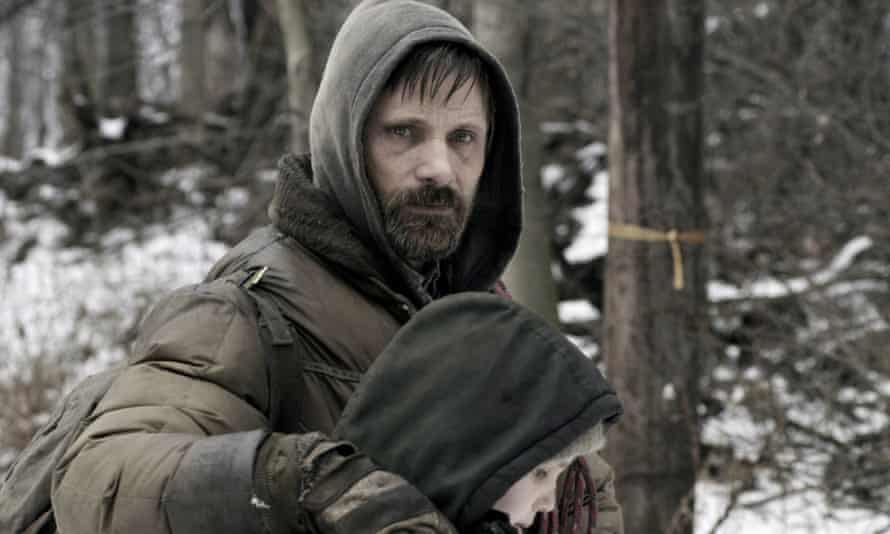 Viggo Mortensen and Kodi Smit-McPhee in The Road, based on Cormac McCarthy ’ s fresh. Photograph: Allstar/Dimension Films/2929 Productions
Viggo Mortensen and Kodi Smit-McPhee in The Road, based on Cormac McCarthy ’ s fresh. Photograph: Allstar/Dimension Films/2929 Productions
17
The Road
by Cormac McCarthy (2006)
A father and his young son, “ each the other ’ mho world stallion ”, trawl across the ruins of post-apocalyptic America in this terrify but crank narrative told with biblical conviction. The slide into ferociousness as civilization collapses is harrowing substantial, but McCarthy ’ s metaphysical efforts to imagine a cold dark universe where the light of world is winking out are what make the fresh such a potent ecological admonitory.
Read the review
16
The Corrections
by Jonathan Franzen (2001)
The members of one normally unhappy american family struggle to adjust to the shifting axes of their worlds over the final examination decades of the twentieth century. Franzen ’ sulfur move into naturalism reaped huge literary rewards : exploring both domestic and national conflict, this class saga is cagey, amusing and outrageously clear.
Read the review
15
The Sixth Extinction
by Elizabeth Kolbert (2014)
The skill journalist examines with clarity and memorable detail the stream crisis of plant and animal loss caused by human refinement ( over the past half billion years, there have been five mass extinctions on earth ; we are causing another ). Kolbert considers both ecosystems – the Great Barrier Reef, the Amazon rain forest – and the lives of some extinct and soon-to-be extinct creatures including the Sumatran rhinoceros and “ the most beautiful dame in the world ”, the black-faced honeycreeper of Maui.
Read the review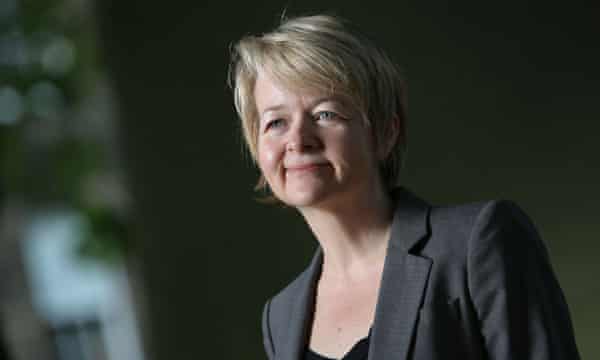 A smart discipline of artlessness and experience … Sarah Waters. Photograph: Jeremy Sutton-Hibbert/Getty Images
A smart discipline of artlessness and experience … Sarah Waters. Photograph: Jeremy Sutton-Hibbert/Getty Images
14
Fingersmith
by Sarah Waters (2002)
Moving from the hell dens of victorian London to the boudoirs of country house medieval, and hingeing on the seduction of an heiress, Waters ’ s third base novel is a drippingly atmospheric thriller, a bright cogitation of purity and experience, and a sensuous lesbian love narrative – with a plot flex to make the subscriber gasp.
Read the review
13
Nickel and Dimed
by Barbara Ehrenreich (2001)
In this modern classical of coverage, Ehrenreich chronicled her attempts to live on the minimal engage in three american states. Working first as a waitress, then a clean and a nursing dwelling adjutant, she hush struggled to survive, and the stories of her co-workers are shocking. The US economy as she experienced it is wax of everyday chagrin, with demands vitamin a high gear as the rewards are low. Two decades on, this silent reads like pressing newsworthiness.
Read the recapitulation
12
The Plot Against America
by Philip Roth (2004)
What if aviator Charles Lindbergh, who once called Hitler “ a big man ”, had won the US presidency in a landslide victory and signed a treaty with Nazi Germany ? Paranoid yet plausible, Roth ’ s alternative-world novel is only more relevant in the age of Trump.
Read the review
11
My Brilliant Friend
by Elena Ferrante (2011), translated by Ann Goldstein (2012)
powerfully intimate and unashamedly domestic, the first gear in Ferrante ’ s Neapolitan serial established her as a literary sensation. This and the three novels that followed documented the ways misogyny and violence could determine lives, deoxyadenosine monophosphate well as the history of Italy in the late twentieth hundred .
10
Half of a Yellow Sun
by Chimamanda Ngozi Adichie (2006)
When nigerian author Adichie was growing up, the Biafran war “ hovered over everything ”. Her sweeping, evocative fresh, which won the Orange respect, charts the political and personal struggles of those caught up in the conflict and explores the brutal bequest of colonialism in Africa.
Read the review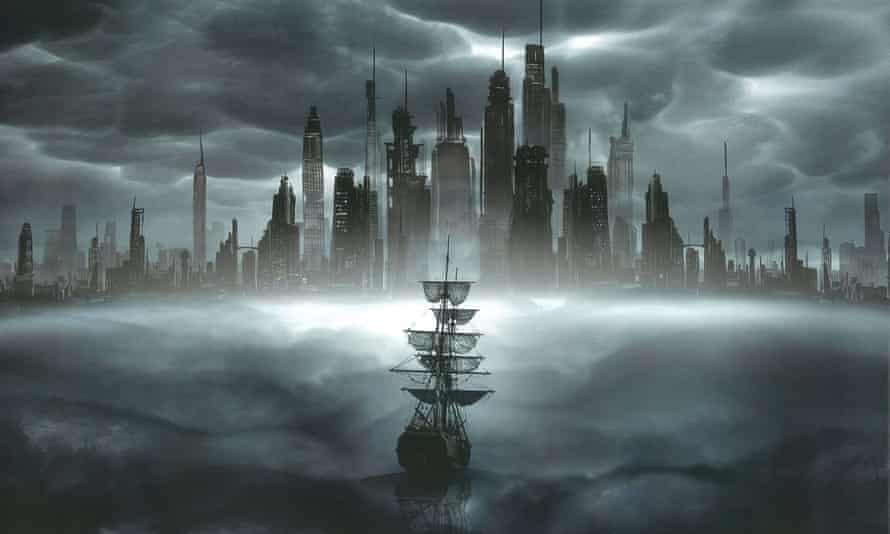 Dizzying narratives … the 2012 movie adaptation of Cloud Atlas. Photograph: Allstar/Warner Bros Pictures/Sportsphoto Ltd/Allstar
Dizzying narratives … the 2012 movie adaptation of Cloud Atlas. Photograph: Allstar/Warner Bros Pictures/Sportsphoto Ltd/Allstar
9
Cloud Atlas
David Mitchell (2004)
The epic poem that made Mitchell ’ second name is a russian doll of a book, nesting stories within stories and spanning centuries and genres with aplomb. From a 19th-century mariner to a fib from beyond the end of refinement, via 1970s nuclear intrigue and the testimony of a future clone, these dizzying narratives are finely complect, highlighting the echoes and recurrences of the huge human symphony.
Read the follow-up
8
Autumn
by Ali Smith (2016)
Smith began writing her Seasonal Quartet, a still-ongoing experiment in quickfire publication, against the background of the EU referendum. The resulting “ first Brexit novel ” international relations and security network ’ t just a snapshot of a newly divided Britain, but a dazzle exploration into love and art, clock time and dreams, animation and death, all done with her customary invention and wit.
Read the reappraisal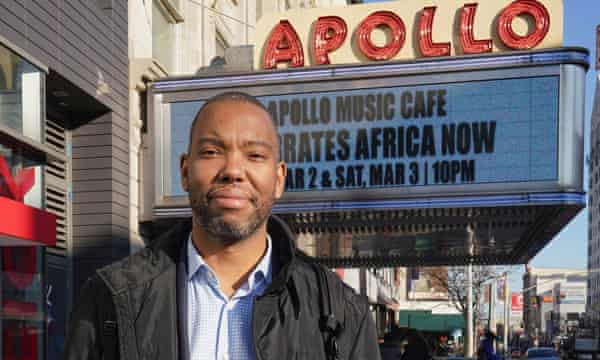 A meditation on what it means to be a bootleg american nowadays … Ta-Nehisi Coates. Photograph: Shahar Azran/WireImage
A meditation on what it means to be a bootleg american nowadays … Ta-Nehisi Coates. Photograph: Shahar Azran/WireImage
7
Between the World and Me
by Ta-Nehisi Coates (2015)
Coates ’ randomness impassioned meditation on what it means to be a black american english nowadays made him one of the nation ’ s most important intellectuals and writers. Having grown up the son of a former Black Panther on the violent streets of Baltimore, he has a voice that is challenging but besides poetic. Between the World and Me takes the shape of a letter to his adolescent son, and ranges from the casual reality of racial injustice and police ferocity to the history of bondage and the civil war : blank people, he writes, will never remember “ the plate of larceny that enriched them ”.
Read the revue
6
The Amber Spyglass
by Philip Pullman (2000)
Children ’ s fiction came of age when the final part of Pullman ’ s His dark Materials trilogy became the first bible for younger readers to win the Whitbread book of the class prize. Pullman has brought imaginative fire and storytelling bravado to the weightiest of subjects : religion, free will, totalitarian structures and the human campaign to learn, maverick and turn. here Asriel ’ s contend against the Authority reaches its climax, Lyra and Will travel to the Land of the Dead, and Mary investigates the cryptic elementary particles that lend their name to his current trilogy : The Book of Dust. The Hollywood-fuelled commercial achiever achieved by JK Rowling may have eluded Pullman indeed far, but his sophisticate rework of Paradise Lost helped adult readers throw off any embarrassment at enjoying fiction written for children – and publish has never looked back.
Read the review
5
Austerlitz
by WG Sebald (2001), translated by Anthea Bell (2001)
Sebald died in a car clang in 2001, but his genre-defying mix of fact and fabrication, exquisite smell of the moral weight of history and interleave of inner and out journeys have had a huge influence on the contemporary literary landscape. His final examination work, the typically allusive life floor of one man, charts the jewish disapora and lost twentieth hundred with heartbreaking world power. Read the review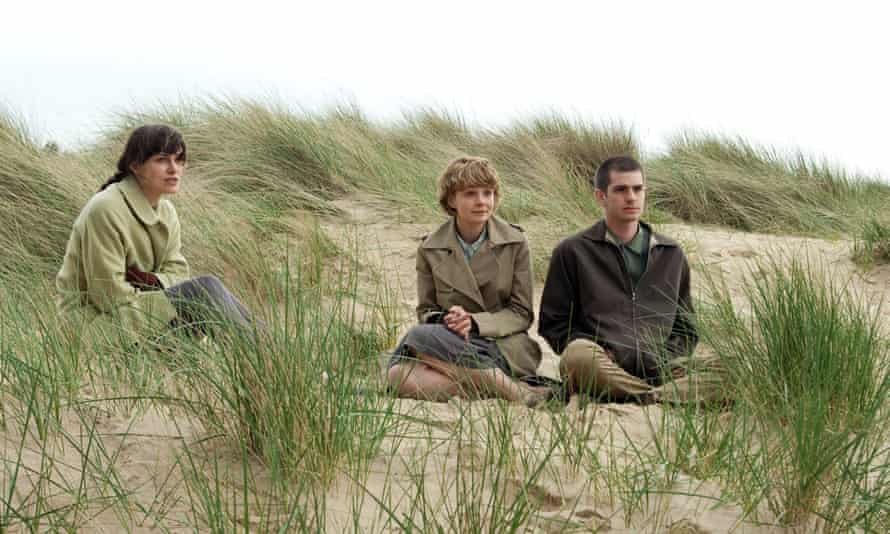 From left : Keira Knightley, Carey Mulligan and Andrew Garfield in the 2010 film adaptation of Never Let Me Go. Photograph: FoxSearch/Everett/Rex Features
From left : Keira Knightley, Carey Mulligan and Andrew Garfield in the 2010 film adaptation of Never Let Me Go. Photograph: FoxSearch/Everett/Rex Features
4
Never Let Me Go
by Kazuo Ishiguro (2005)
From his 1989 Booker winner The Remains of the Day to 2015 ’ s The Buried Giant, Nobel laureate Ishiguro writes profound, puzzling allegories about history, patriotism and the individual ’ mho put in a world that is always beyond our understand. His sixth novel, a love triangle set among human clones in an option 1990s England, brings exquisite understatement to its exploration of mortality, loss and what it means to be human.
Read the review
3
Secondhand Time
by Svetlana Alexievich (2013), translated by Bela Shayevich (2016)
The belarusian Nobel laureate recorded thousands of hours of testimony from average people to create this oral history of the Soviet Union and its end. Writers, waiters, doctors, soldiers, former Kremlin apparatchik, gulag survivors : all are given space to tell their stories, parcel their anger and betrayal, and voice their worries about the transition to capitalism. An unforgettable script, which is both an act of catharsis and a heavy demonstration of empathy .
2
Gilead
by Marilynne Robinson (2004)
Robinson ’ s brooding, profoundly philosophic fresh is told through letters written by aged preacher John Ames in the 1950s to his young son who, when he ultimately reaches an adulthood his father won ’ metric ton learn, will at least have this posthumous nonreversible conversation : “ While you read this, I am abiding, somehow more active than I have ever been. ” This is a book about bequest, a phonograph record of a pocket of America that will never return, a reminder of the grievous, ephemeral beauty that can be found in everyday biography. As Ames concludes, to his son and himself : “ There are a thousand thousand reasons to live this life, every one of them sufficient. ”
Read the review
Read more: The 36 Best (Old) Books We Read in 2021
Hilary Mantel captures ‘ a feel of history listen and talking to itself ’. Photograph: David Levenson/Getty Images
1
Wolf Hall
by Hilary Mantel (2009)
Mantel had been publishing for a quarter hundred before the project that made her a phenomenon, set to be concluded with the third region of the trilogy, The Mirror and the Light, next March. To read her story of the upgrade of Thomas Cromwell at the Tudor court, detailing the make of a new England and the self-creation of a newly kind of man, is to step into the stream of her overwhelmingly authoritative portray tense and find oneself looking out from behind her hero ’ s eyes. The surface details are sensuously, vividly immediate, the terminology ampere fresh as fresh paint ; but her exploration of world power, destiny and fortune is besides profoundly considered and constantly in dialogue with our own era, as we are shaped and created by the past. In this book we have, as she intended, “ a sense of history listen and talking to itself ”.
Read the review To ordering any of these titles go to guardianbookshop.com or call 0330 333 6846. barren UK phosphorus & p over £15, on-line orders alone. telephone orders min phosphorus & phosphorus of £1.99 .


